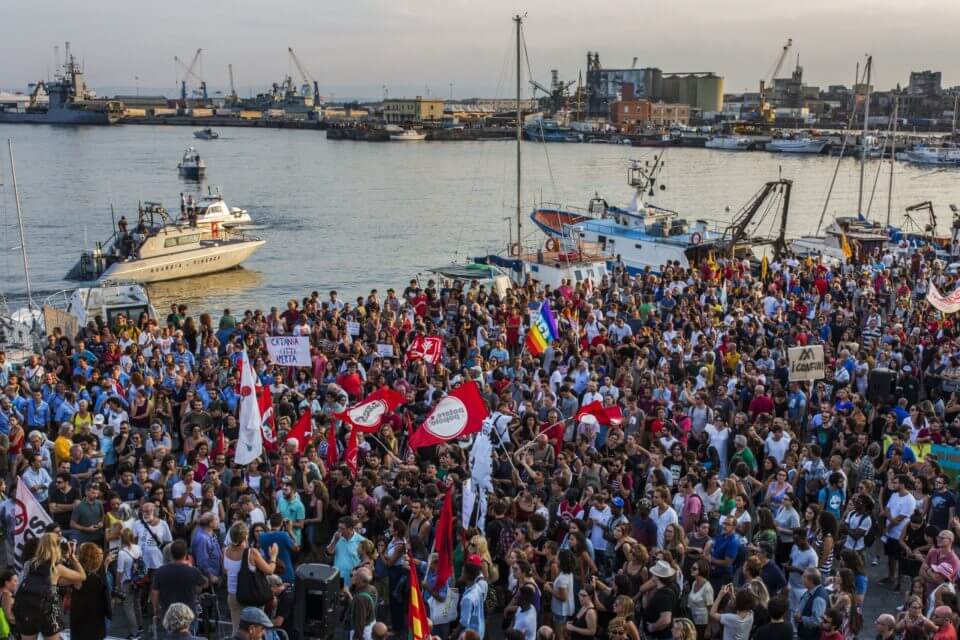
“This is a perfect example of why a global problem needs a single multilateral response, and not various contradictory unilateral responses.”
At first, most Americans only expected the Coronavirus (COVID-19) crisis to last a few weeks—a temporary disruption to everyday life. An “extended spring break,” as many schools called it. Then, as the infection rate skyrocketed, universities closed for the remainder of the semester, couples canceled summer weddings, and Japan postponed the 2020 Olympic Games—which had been set to kick off in July. Panic-buying excessive amounts of toilet paper, the public began to anticipate this crisis lasting a matter of months instead. The United States and many other nations went into lockdown. People were not working, and children could not attend school. Some of our friends and loved ones were in danger, and we were unable to leave our homes to help them. More alarmingly, with hospitals inundated and in desperate need of essential equipment, our healthcare system had become completely inaccessible, particularly for elective procedures. Estimates of the crisis’s lifespan stood anywhere from 18 to 24 months. It was nothing short of a dystopian nightmare.
However, those in power fail asylum seekers in the same way they failed us during the COVID-19 crisis.
As we experienced significant and unprecedented disruptions to our daily lives, we asked ourselves, “How did we get here? And how long will this crisis last?” These are the questions that refugees ask themselves, too. Currently, a record 71 million people globally are forcibly displaced, and that number continues to grow in parallel to violent conflict. Forced to flee their homes, most refugees will spend years—or even decades—living in makeshift, overcrowded encampments. Entire generations of families are born and die behind barbed-wire fences, unable to leave and seek local integration or resettlement in another country. Like us, at the outset of protracted refugee situations, many displaced people believe the conditions they are forced to endure are only short-term—and that their leaders or supranational organizations will take timely and decisive action to restore normalcy to their lives. However, those in power fail asylum seekers in the same way they failed us during the COVID-19 crisis.
The majority of nations in the Global North underestimated both crises and, thus, under-reacted accordingly. Once the international community recognized that the issues in question were, in fact, crises, it was already too late. In 2015, European Union (EU) public figures actively downplayed the severity of the refugee crisis to avoid mass panic. However, tensions in Syria had been escalating for years beforehand, and, in 2012, Syrians began to flee their homeland in a mass exodus. It was easy to predict that years of under-funding supranational organizations and a lack of permanent resettlement efforts would pressure displaced Syrians to set out for Western Europe in hopes of finding safety. Nevertheless, European authorities were overwhelmed in 2015 when the millions of refugees they had neglected for years arrived in Europe. The lack of preparation on the part of the EU—including limited reception facilities and an insufficient number of immigration officers—created the illusion that the EU was under siege from a hostile swarm. It appeared that the number of people was simply too large for the EU to handle. In reality, the number of asylum seekers was minuscule compared to the EU’s combined population and wealth at the time. With enough advance planning, the Mediterranean would not have become a graveyard for thousands.
The world experienced a similar pattern with the current pandemic. There was plenty of advance warning; however, some proactive efforts were avoided presumably for fear of inciting public alarm. Chinese government officials intentionally concealed the threat of the outbreak when it first began in December, failed to communicate crucial information to the global community, and allowed millions of people to travel internationally. Then, in February, Italy’s Prime Minister, Giuseppe Conte, trivialized the exponentially increasing coronavirus infections and subsequently attacked the credibility of the global media’s coverage of the pandemic. And U.S. President Donald Trump followed suit, delaying imposing a travel ban on certain European nations, including Italy, and suggesting on February 26th that cases would soon “be down to close to zero.” The lack of foresight on the part of these leaders proved deadly as all three of these nations became COVID-19 epicenters. Social distancing measures, increased testing for COVID-19, and the bolstering of national health care systems all came too late. As the virus swept the world in March, the political narrative became that the pandemic was inevitable and insurmountable in nature, rather than a product of the Global North’s arrogance and lack of preparation.
In the context of both crises, when the international community eventually took action, the global response was disorganized and ineffective at best. Many nations have taken an isolationist approach in declaring uncoordinated lockdowns that parallels the chaos of the EU’s response to the 2015 refugee crisis; Germany buckled under its “open door” policy, while the United Kingdom’s protectionist approach was self-serving. The international community has already shown itself capable of collaboration; global leaders’ timely and decisive actions during the 2008 global financial crisis—such as holding emergency meetings and ordering stimulus to buttress the world economy—prevented the recession from devolving into a Great Depression-era crisis. This is a perfect example of why a global problem needs a single multilateral response, and not various contradictory unilateral responses.
As various countries begin to come out of lockdown after more than three months, there is hope for a vaccine and an eventual return to a new normal. The world will heal, but consider this period an exercise in empathy; refugees grieve for missed milestones—marriages, birthdays, and funerals not just this year, but every single year. It might not make headlines, but their pain will be prolonged for years to come. In fact, the average refugee situation, according to a 2003 United Nations’ estimate, lasts 17 years. This cruel statistic creates the perception that the global refugee crises is a series of never-ending events spiraling out of control when, in fact, aiding asylum seekers is entirely in our control. We cannot continue to ignore them just because we believe ourselves immune to statelessness.
Gwyneth Bernier is a student at Duke University studying forced migration.










